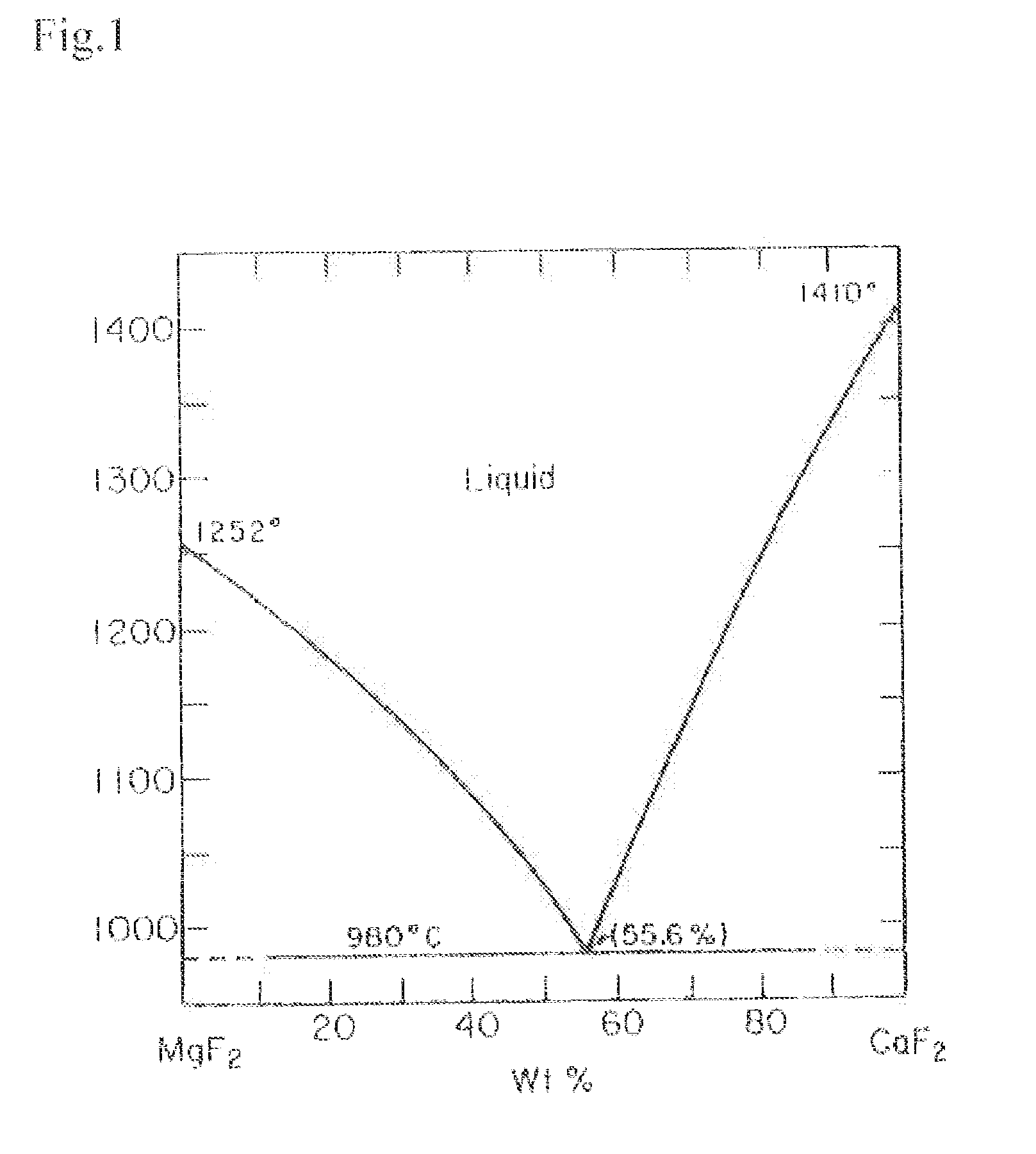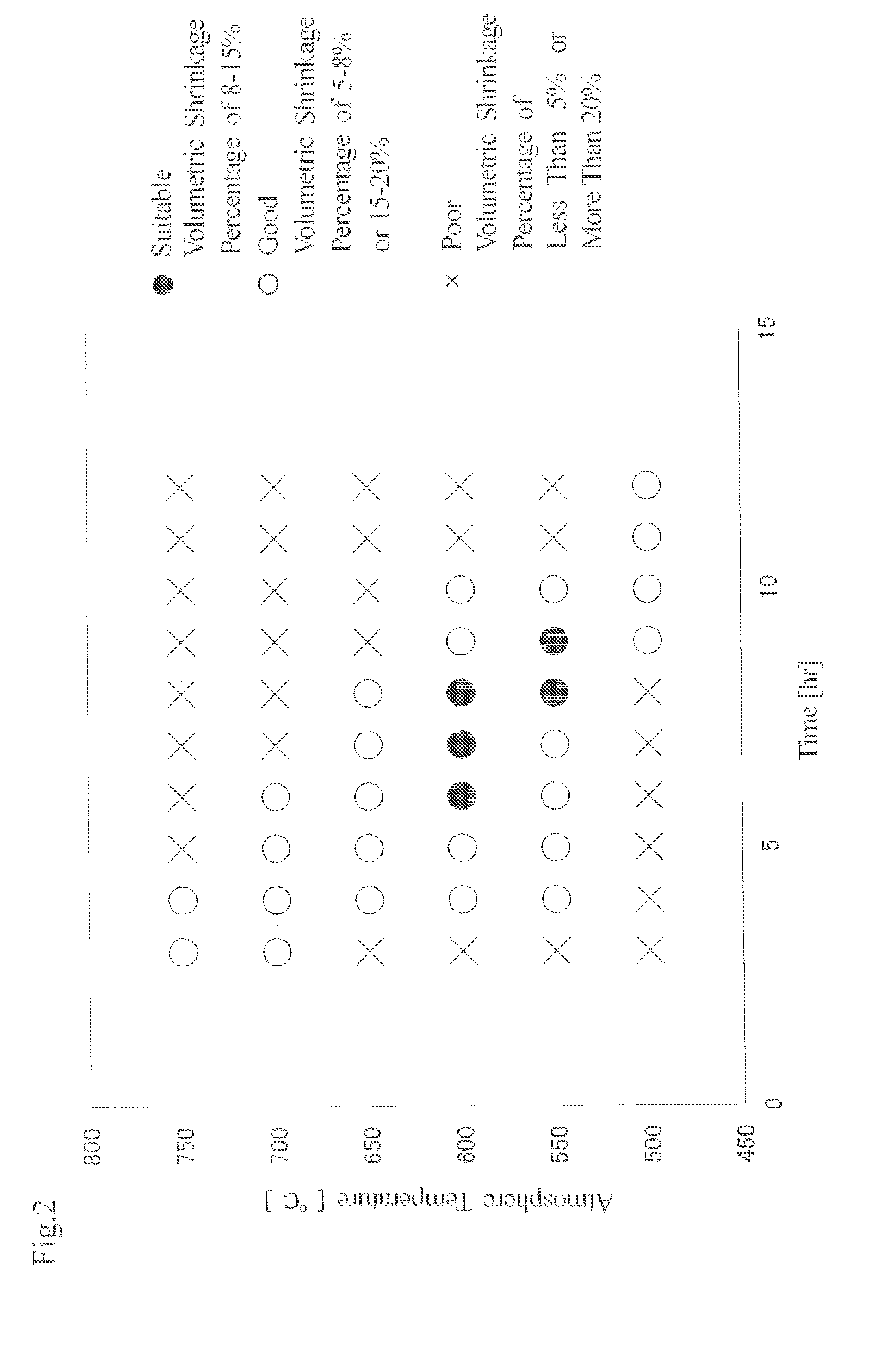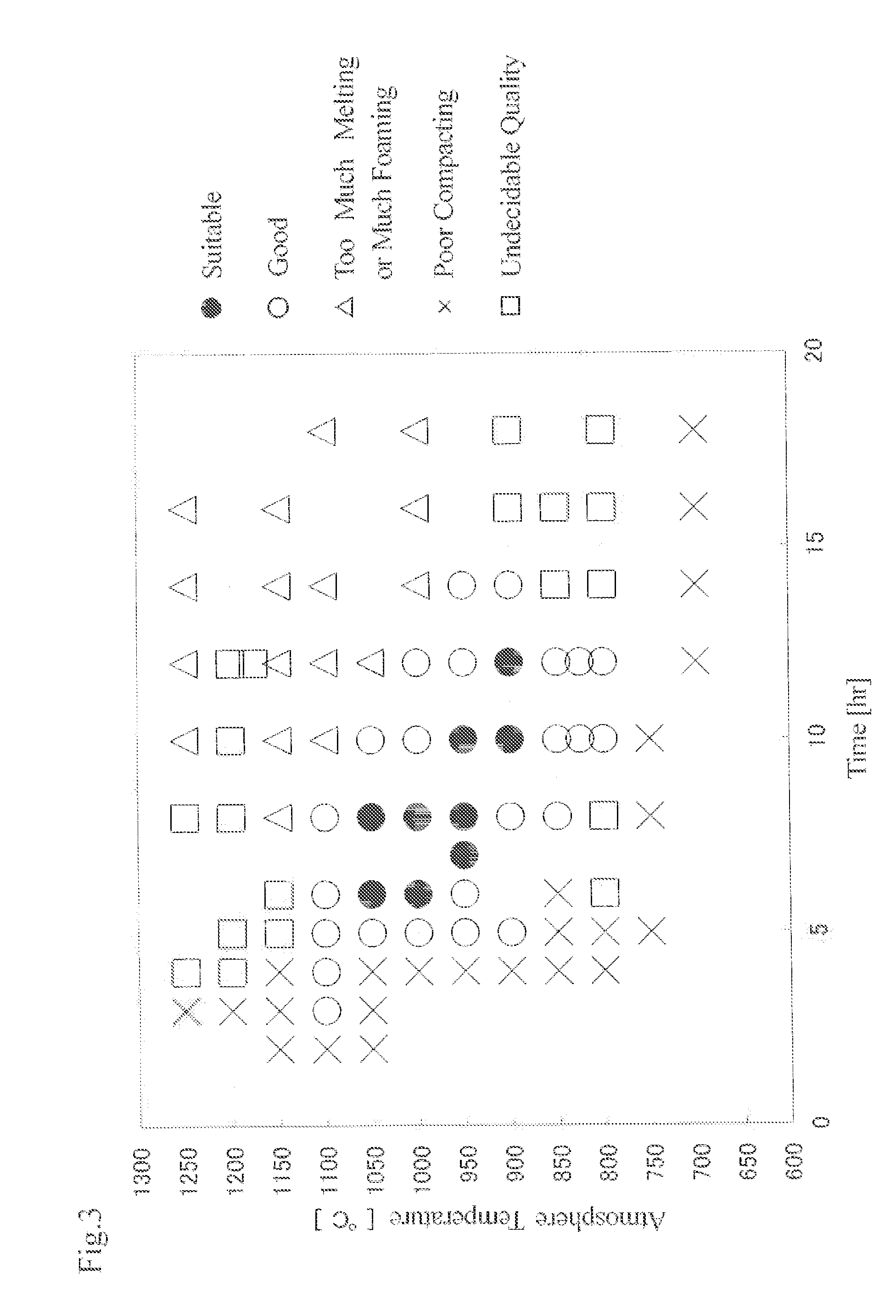Fluoride sintered body for neutron moderator and method for producing the same
a technology of neutron moderator and fluoride sintered body, which is applied in the field of fluoride sintered body and a method for producing the same, can solve the problems of trace quantity, side effects, and high cost of single crystal body, and achieve the effect of enhancing remedial values
- Summary
- Abstract
- Description
- Claims
- Application Information
AI Technical Summary
Benefits of technology
Problems solved by technology
Method used
Image
Examples
example 1
[0175]A high-purity MgF2 raw material (mean particle diameter of 20 μm and purity of 99.9% by weight or more) was pulverized using the pot mill and alumina balls described in the ‘Mode for Carrying Out the Invention’, to a high-purity MgF2 powder (mean particle diameter of 1.2 μm and purity of 99.9% by weight or more). To the powder, a carboxymethyl cellulose (CMC) solution was added as a sintering aid in the proportion of 0.2% by weight to 100 of the MgF2 powder, and mixed in the pot mill for 12 hours so as to be a starting raw material.
[0176]This starting raw material was filled into a mold form (mold size of 220 mm×220 mm×H150 mm) using a uniaxial press device and compressed at a uniaxial press pressure of 10 MPa to be molded.
[0177]This press molded body (size of about 220 mm×220 mm×t85 mm), which was put into a thick vinyl bag and sealed after deairing, was put into a molding part (inside size: inside diameter 350 mm×H120 mm) of a cold isostatic pressing (CIP) device. Clean wate...
example 2
[0184]Using the same starting raw material as in the above Example 1, preliminary sintering at 550° C. for 10 hours in an air atmosphere was conducted on a molded body to which uniaxial press molding and cold isostatic pressing (CIP) were applied in the same manner, so as to obtain a preliminary sintered body of 208 mm×208 mm×t73 mm. This preliminary sintered body was heated from room temperature to 750° C. at a fixed rate for 6 hours in a nitrogen gas atmosphere, and the temperature was held there for 9 hours. It was then raised to 920° C. at a fixed rate for 2 hours and held there for 2 hours. The temperature was then lowered by furnace cooling to 100° C. at which time it was previously set to take out the sintered body, after which it was taken out. The rough size of the sintered body was 195 mm×195 mm×t64 mm, the bulk density thereof was 2.90 g / cm3 (relative density of 92.1%), and the sintering state was good.
[0185]Any of the evaluation results of the neutron moderation performa...
example 3
[0186]Using the same starting raw material as in the above Example 1, preliminary sintering at 600° C. for 8 hours in an air atmosphere was conducted on a molded body to which uniaxial press molding and cold isostatic pressing (CIP) were applied in the same manner, so as to obtain a preliminary sintered body of 206.5 mm×207 mm×t71 mm. This preliminary sintered body was heated from room temperature to 840° C. at a fixed rate for 6 hours in a nitrogen gas atmosphere, and the temperature was held there for 12 hours. It was then raised to 1080° C. at a fixed rate for 2 hours and held there for 1 hour. The temperature was then lowered by furnace cooling to 100° C. at which time it was previously set to take out the sintered body, after which it was taken out. The rough size of the sintered body was 192 mm×192 mm×t61 mm, the bulk density thereof was 3.00 g / cm3 (relative density of 95.2%), and the sintering state was good.
[0187]Any of the evaluation results of the neutron moderation perfor...
PUM
| Property | Measurement | Unit |
|---|---|---|
| Temperature | aaaaa | aaaaa |
| Temperature | aaaaa | aaaaa |
| Temperature | aaaaa | aaaaa |
Abstract
Description
Claims
Application Information
 Login to View More
Login to View More - R&D
- Intellectual Property
- Life Sciences
- Materials
- Tech Scout
- Unparalleled Data Quality
- Higher Quality Content
- 60% Fewer Hallucinations
Browse by: Latest US Patents, China's latest patents, Technical Efficacy Thesaurus, Application Domain, Technology Topic, Popular Technical Reports.
© 2025 PatSnap. All rights reserved.Legal|Privacy policy|Modern Slavery Act Transparency Statement|Sitemap|About US| Contact US: help@patsnap.com



